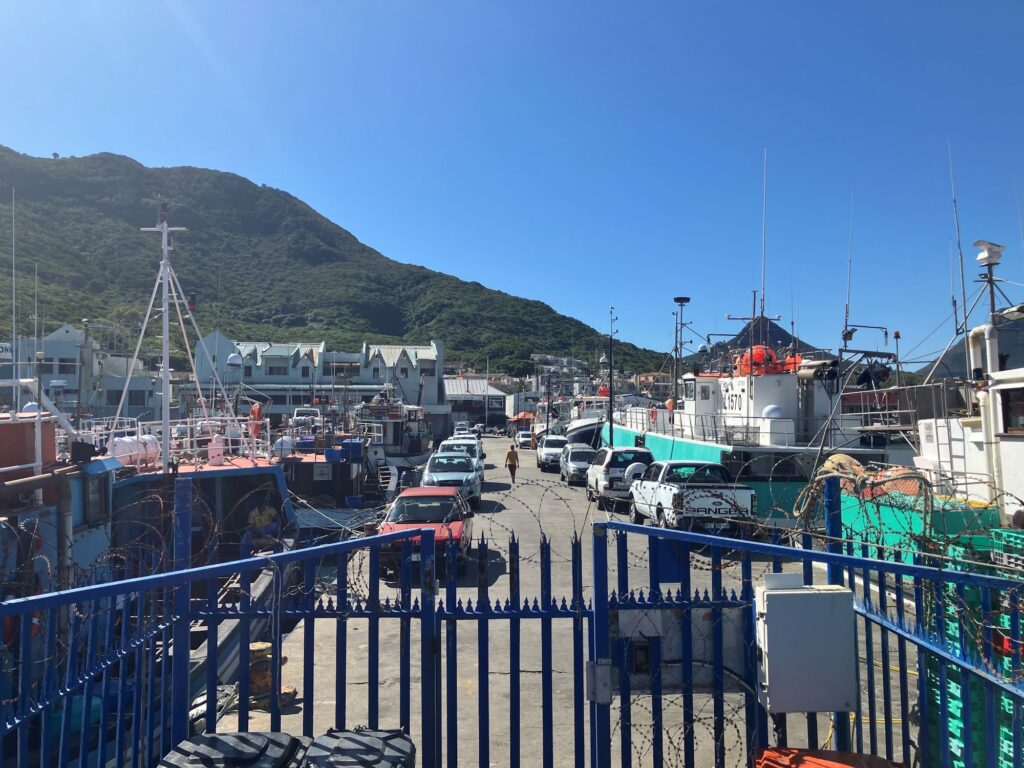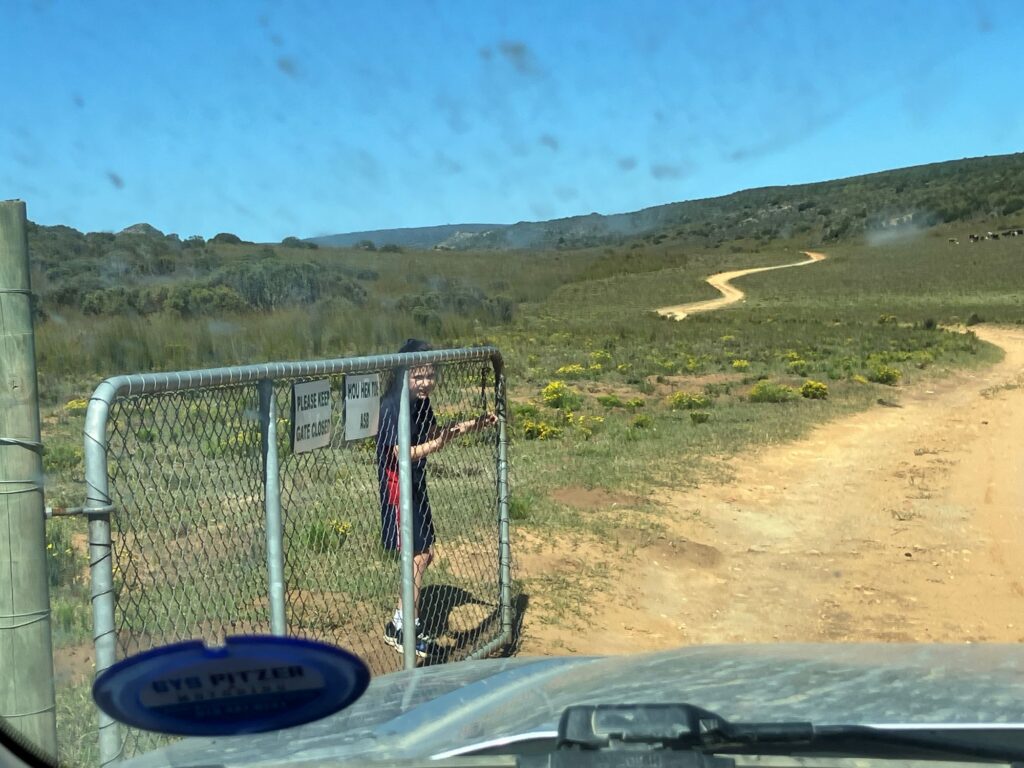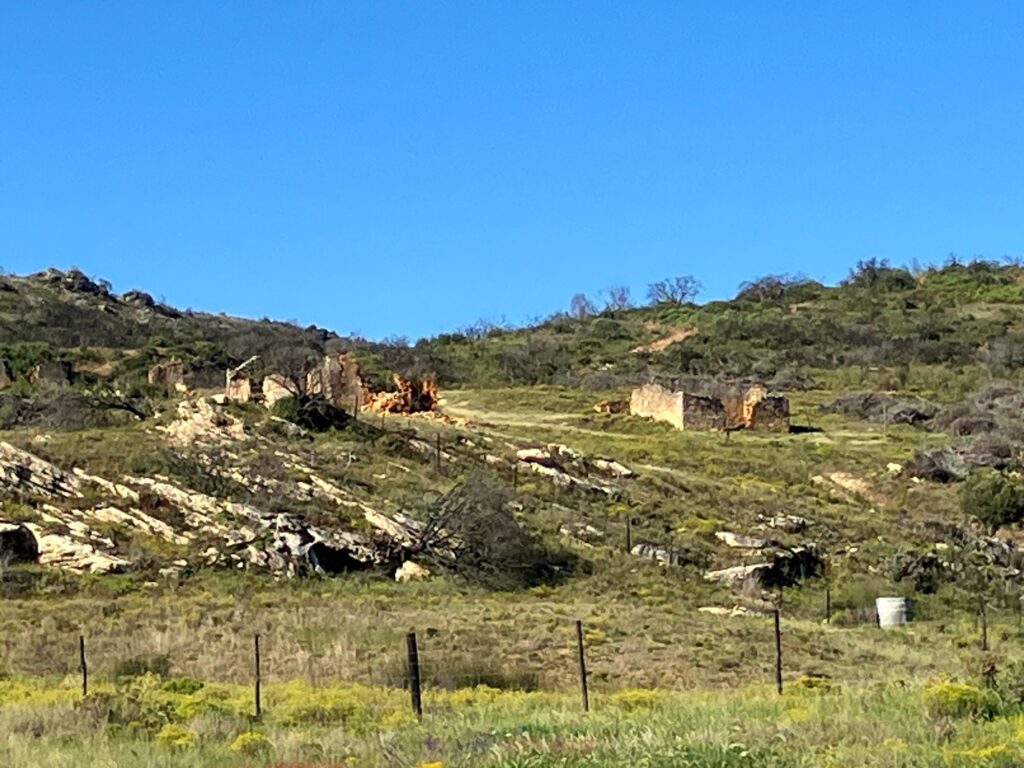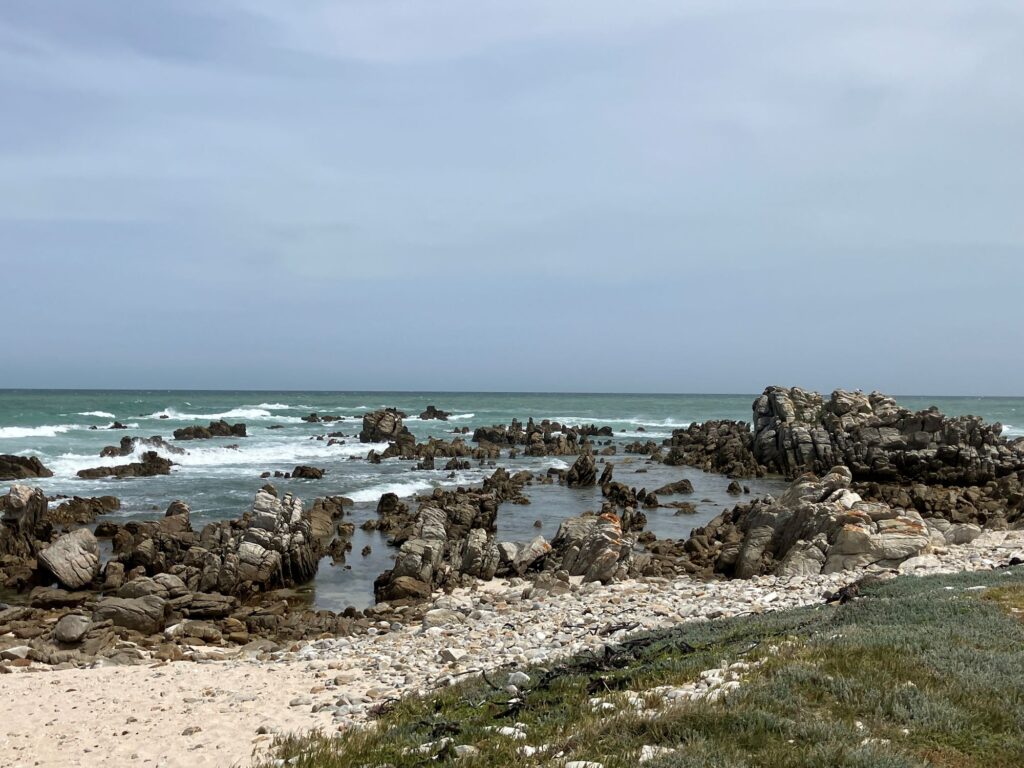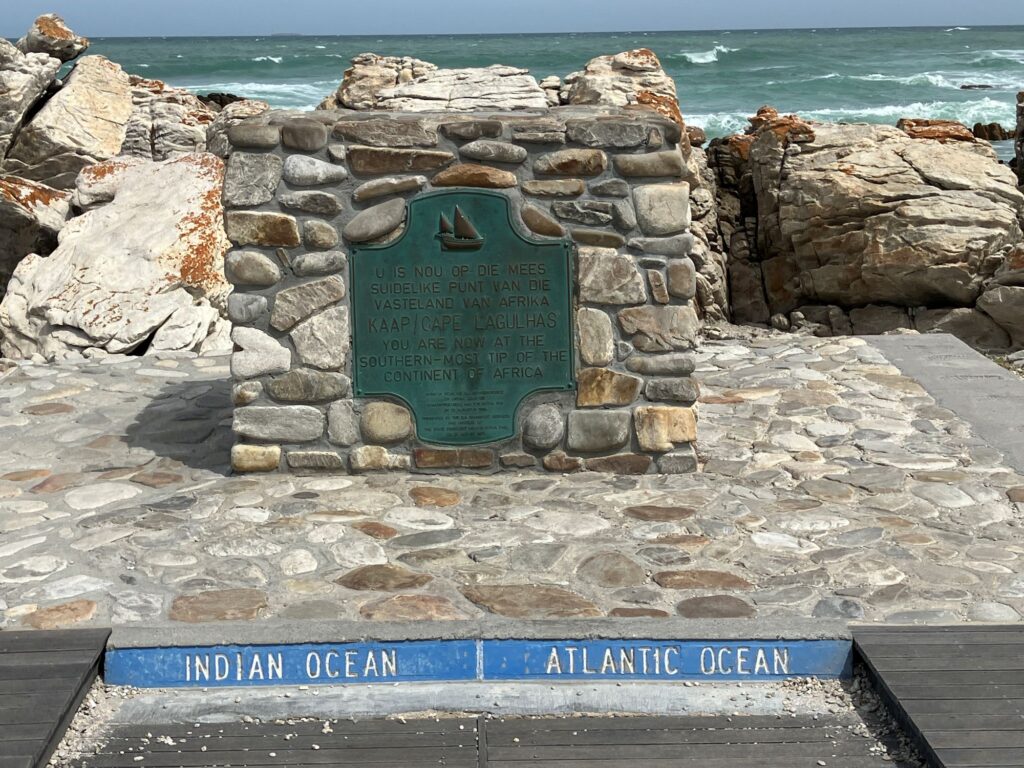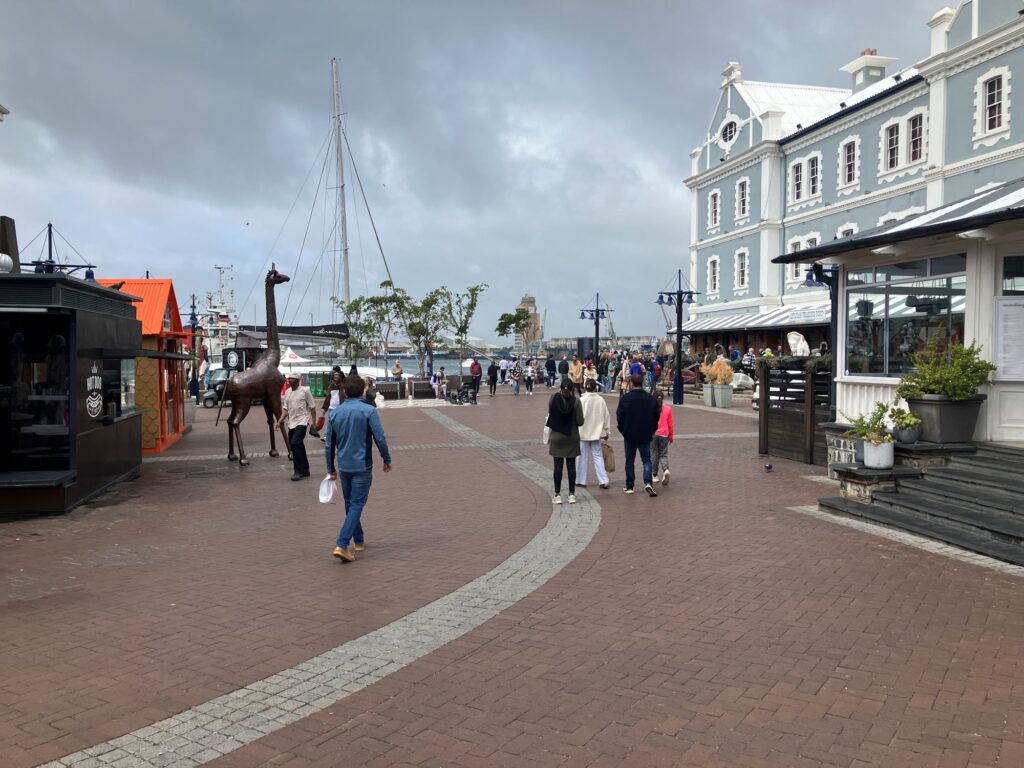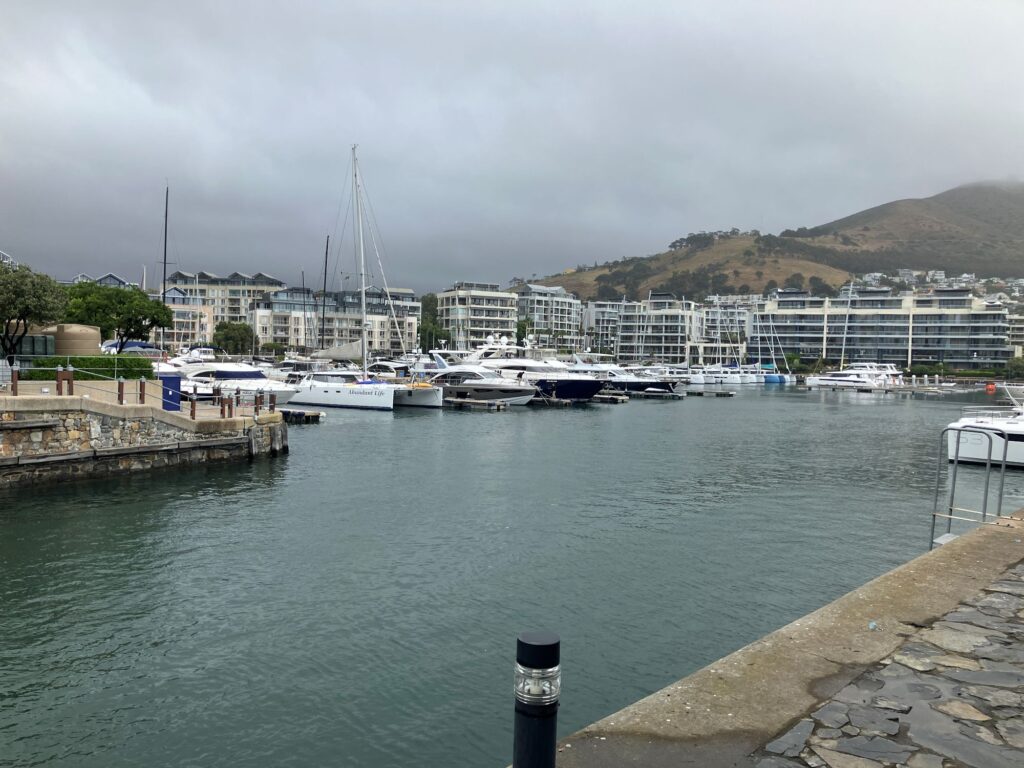I kept my boat a total of 10 days at the Hout Bay Yacht Club marina, partly to fix a few things but also to have some time to explore this southwestern part of South Africa.
One thing I wanted to accomplish while there were some simple repairs to my mainsail. One of the batten sleeves needed to be re-sewn and I needed to replace the broken top batten. Unlike my previous stops in South Africa, Cape Town has capable sail-makers who could easily accomplish these tasks. I contacted Ullman Sails on Friday and they sent a team Monday morning to collect the sail from my boat and take it back to their shop. They came with a long sail bag and 4 guys so the sail could be rolled up with the battens still in place and taken away, especially easy with a furling boom. This is very efficient, avoiding having to take the sail down, removing the battens, and flake (fold) the sail into a square bundle for transport. They brought it back Thursday afternoon with the repairs made and fitted back on the boom, with my direction. It was expensive have the sail collected and delivered from their shop in Cape Town but the convenience was well worth it.
I had rental car while in Hout Bay I picked up at the Cape Town airport, using Uber to get there from Hout Bay. I drove east to visit friends Alex and Ronel Ponot, and their three kids who now live in Stilbaai on the coast. I first met them in Oregon where they owned a motel in Pacific City and then a horse ranch near Salem. A few years ago they sold it all and moved to the Perigord region of France, including transporting several horses there. They had a horse ranch in Perigord as well but Alex, who is French, said the French bureaucracy was so stifling he couldn’t make a business of it so they decided to move again, this time to South Africa but without the horses this time. Ronel is originally from Pretoria. They have a beach house in Stillbaai and a large ranch outside of town where I stayed with them for the night. I had a good time seeing a slice of South African life visitors don’t normally see.
After Stilbaai I drove down to Cape Agulhas, the southernmost point in Africa, where I spent the night in a great B&B near the lighthouse at the cape. Of course, they also have a prominent marker, and precise line, declaring it the point separating the Indian and Atlantic Oceans, all a pretty artificial construct. The oceans don’t know their names or where one begins and the other ends.
On the drive to Stilbaai and back I was amazed by the vast farm fields, orchards, and vineyards on both sides of the N2 highway. The soil and climate must certainly be conducive to agriculture, no doubt a key reason Europeans were drawn to settle here centuries ago.
Before returning to my boat in Hout Bay I spent the afternoon at the Victoria & Alfred (V&A) section of Cape Town, an area of old industrial wharfs and warehouses that have been re-purposed and expanded to house many restaurants and shops. With broad walkways and plazas along the water, it reminded me a little of Fisherman’s Wharf in San Francisco. There is also a nice marina here where I could have put the boat instead of Hout Bay. If you want your boat in Cape Town this is a better place to go than the larger marina at the Royal Cape Yacht Club. I had lunch at RCYC one day when I was in town buying spare parts. The club and marina are situated in a very industrial part of the port. Walking out the front door you are confronted with railroad tracks and long lines of trucks waiting to unload their containers. Unlike the V&A marina, there are no restaurants or shops anywhere nearby. You would definitely need a car if you put your boat at the RCYC marina.
